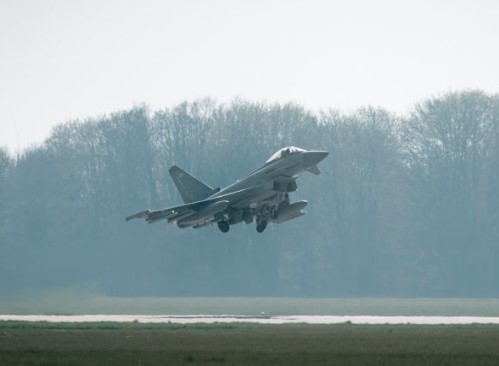A Russian military plane entered Estonian airspace without authorization on the evening of May 13. This kind of action is serious because every country controls who can fly in its skies.
Sudden Breach Over Estonia
The plane involved in this case was a Sukhoi Su-35, a powerful and fast fighter jet used by Russia. It entered the airspace above the Juminda Peninsula, a region located near the Gulf of Finland.
The incident is being handled very seriously, even though the plane was only in Estonian territory for less than a minute. Estonia’s military confirmed that no flight plan had been submitted. This means the plane gave no advance notice about its flight. Also, the aircraft had turned off its transponders. Transponders are devices that help air traffic control see where a plane is on their radar systems. Turning them off hides the plane from normal tracking systems, which can be seen as a dangerous and suspicious move.
Additionally, the pilot of the fighter jet did not speak to Estonian air traffic controllers. In order to maintain safety and prevent miscommunications, all aircraft are often expected to stay in communication with ground control. No such contact was made in this instance.
NATO’s Quick Reaction
Estonia is a member of NATO, a group of countries that promise to help protect each other. Because of this, NATO always keeps some fighter jets in the region to guard the airspace. These jets are part of something called the Baltic Air Policing Mission. Portuguese Air Force F-16 fighter jets were based at Estonia’s Ämari Air Base at the time of the breach. These jets were immediately sent up into the sky to check the situation.
The Portuguese jets conducted a reconnaissance flight, which means they flew in the area to gather information and understand what had happened. These types of responses are common when unknown or unapproved aircraft enter a country’s airspace. The goal is to ensure safety and prevent any conflict.
In response to the incident, Estonia’s Ministry of Foreign Affairs moved quickly. A diplomat from the Russian Embassy in Estonia was called in and handed a formal letter of protest. This kind of note is called a “diplomatic note” and is used between countries to communicate serious matters.
The ministry clearly said that the airspace violation was unacceptable. Entering another country’s airspace without permission, especially during military exercises, is considered dangerous and disrespectful.
Timing and Past Violations
The airspace violation occurred during Estonia’s biggest military training exercise of the year. This exercise is called “Exercise Hedgehog” and involves over 16,000 soldiers. These include troops from Estonia as well as from other NATO member countries. The training is meant to help prepare the military for different situations and improve teamwork between allied forces.
Hanoi’s Nuclear Leap: Vietnam Bets Big on Russian Reactors — West Watches With Growing Unease
This recent incident is the first time in several years that Estonia’s airspace has been officially breached. However, such events were more common in the past. From 2014 to 2023, there were several airspace violations by Russian jets every year. In many of those cases, the Russian planes also flew without filed flight plans, with their transponders off, and without talking to Estonian authorities.
Even when Russian planes do not fully enter Estonian airspace, they often fly very close to the border. These close approaches are enough to make NATO jets take off and monitor the situation. These flights near the border can create tension, especially when they are done without proper communication.
In earlier years, certain areas like near Vaindloo Island were especially targeted. Russian planes used to fly into Estonian airspace in that region quite often. In response, Estonia’s Air Force began giving radio warnings. After that, the Russian pilots started changing their direction in time and avoided crossing the line. However, these planes still fly close to Estonian skies more frequently now.
Only 26 in the World—And One’s at War: Canada’s Strike on Russia’s Rare Supercargo
Such actions can appear threatening or aggressive. But not all of them are considered part of a larger plan or strategy. Sometimes, they are seen as acts meant to show off strength or simply due to poor coordination on the Russian side. Regardless of the reason, crossing into another country’s airspace without permission is taken very seriously.
This recent incident once again highlights the importance of keeping international rules in place, especially when it comes to national security and airspace safety. Estonia and its allies responded quickly and firmly to ensure that such actions do not go unnoticed.

